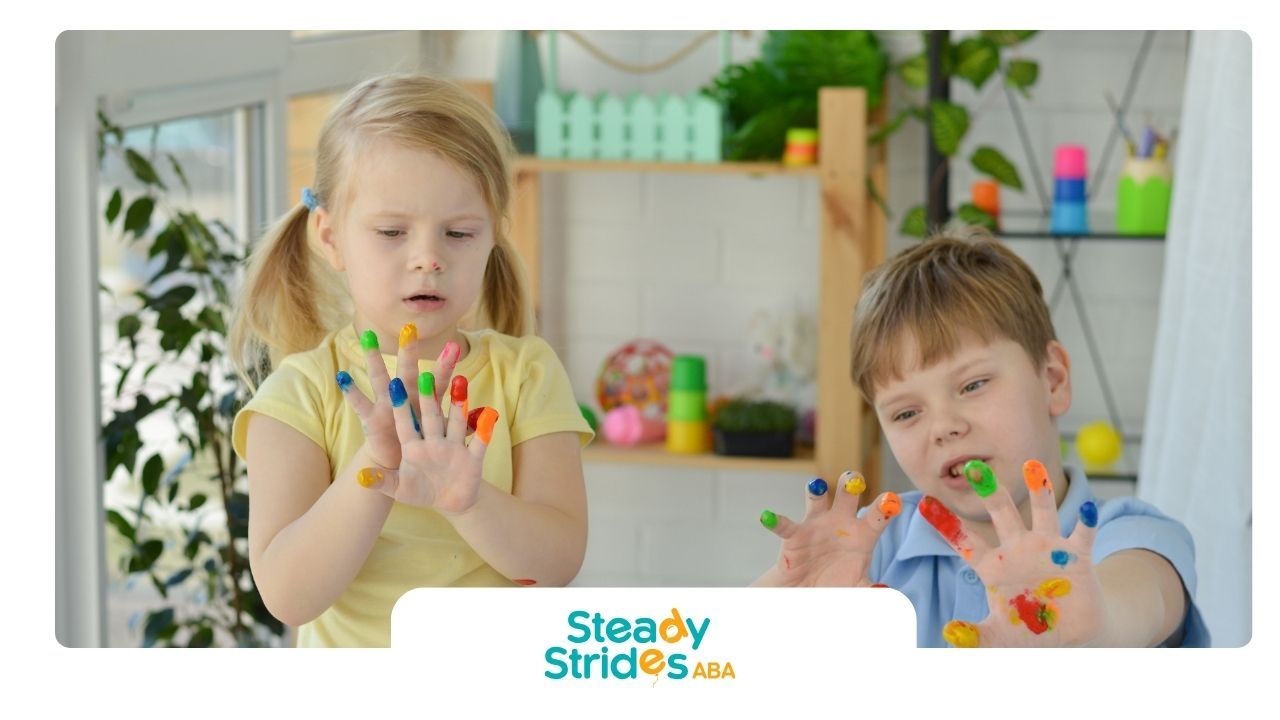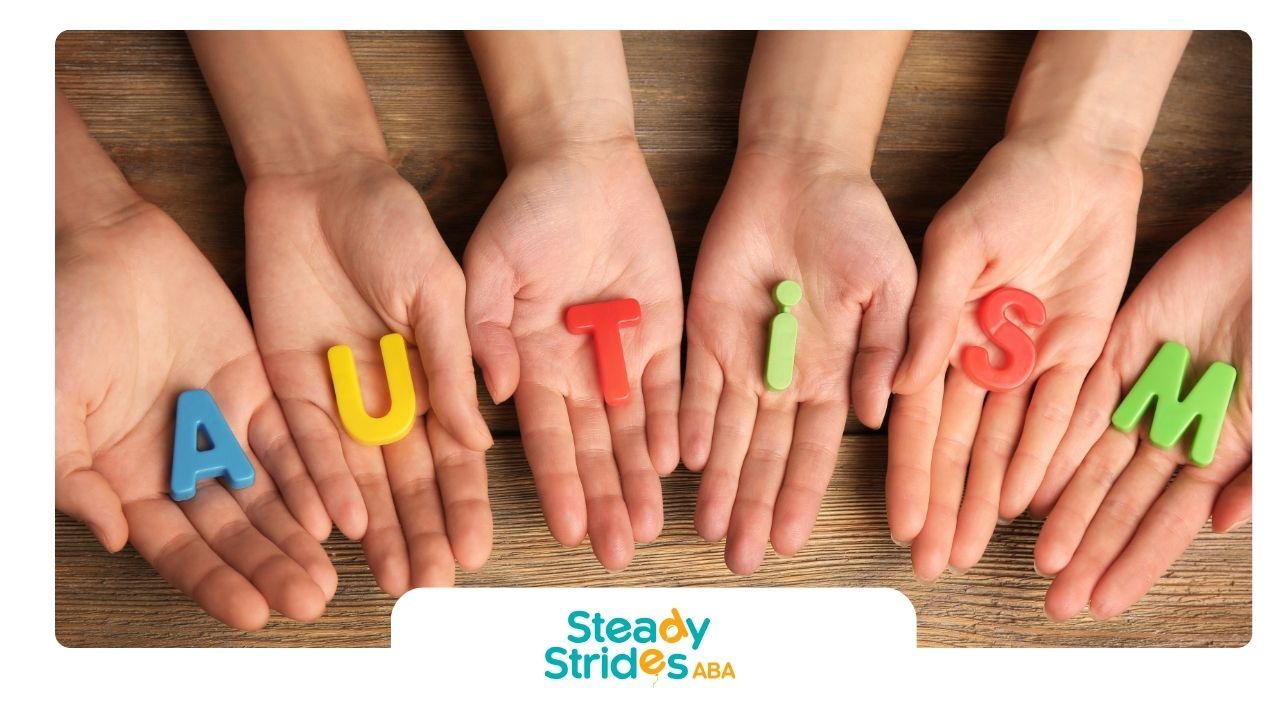Parenting an autistic child can be hard, especially when you see certain behaviors that stand out. After an autism diagnosis, many parents do not know if a child is acting a certain way because of autistic traits or if it is just normal mischief. Some people may call these actions what a "spoiled brat" would do, but that can lead to more frustration and may not help solve the problem. Autism often brings different ways of growing and unique things that shape the child’s life. When parents learn about these differences, they can give better support. This helps their child grow in a good way.
What Is Considered “Spoiled” Behavior in Children?
Defining spoiled behavior in children can be tricky, since people may see things differently. Most people think of a “spoiled brat” when a child rudely asks for things or has tantrums instead of taking responsibility. These actions usually match the stereotype that many have of spoiled kids. But with an autistic child, such behaviors might happen because of developmental delays or because they have a hard time understanding what is expected in their life.
Autistic kids are not like other children, since they might show such behaviors for different reasons. These can come from sensory sensitivities or because it is tough for them to communicate. It is important to see and know about these differences. This way, people will not use unfair labels and can instead help with their special needs.
Defining Spoiled Behavior: Myths vs. Reality
There are many wrong ideas about spoiled behavior, and these lead to harmful stereotypes, especially for autistic kids. When people use the term “spoiled brat,” it can stop real conversations about why some kids show certain behaviors. For parents of autistic children, being judged by others often makes it harder for them to meet their child’s needs the right way.
In truth, a lot of things people call spoiled actions—like when a child does not want hugs or acts out in new places—happen because of sensory issues or strong emotions. These are not ways to get more attention. They come from struggles that are a normal part of autism.
Parents of autistic children should help family members and the wider community learn about these concerns. Sharing details about sensory issues, delays in development, and problems with talking can help break old myths. It will also help people welcome autistic kids and their families.
Cultural Perceptions of Spoiling in the United States
Cultural insights affect how people see spoiled behavior in children. In the United States, people often have a stricter point of view than in the rest of the world. When a child does not share toys or says no to hugs from family members, it can be seen as a sign of feeling special or the result of bad parenting.
For children with autism spectrum disorder (ASD), these cultural expectations make things even harder. Children with autism can have high support needs and trouble with emotional control. It is hard for them to act in the ways others expect, but family members may sometimes look at this and think the child is just being spoiled.
If people in the home and community look at autistic traits instead of only seeing regular behavior, they can start to feel empathy. Parents of autistic children in the United States often work hard to help others understand where cultural mix-ups come from. They also hope to make it better for their children to be included in society.
Autism and Challenging Behaviors: Key Differences
Spotting the difference between autism-specific behaviors and normal tough behaviors is very important. Autism spectrum disorder (ASD) brings its own set of behavioral challenges. The key thing to know is these behaviors come from how the brain works, not because a child is choosing to be disobedient.
While neurotypical children might act out to test limits, an autistic child often has a hard time managing emotions or gets overwhelmed by senses. Both types of behavior can look the same to people, but they are really not. Knowing how to tell them apart helps parents and caregivers use better ways to help. This can help an autistic child grow and feel less upset, and also help make things smoother for everyone involved.
How Autism Affects Emotional Regulation
Emotional regulation is often hard for autistic kids. This can lead to meltdowns and other behavioral challenges. When some autistic kids do not make eye contact during emotional moments, it does not mean they are being bad. It may just show they feel uneasy. Autistic traits, like being very sensitive to how people act or speak, make it tough for them to handle feelings such as sadness or frustration.
Meltdowns can happen when their senses are ignored or when things around them take over their ability to cope. These meltdowns are not the same as tantrums with a typical kid. Autistic kids do not mean to act out. Meltdowns are just how their bodies react when things are too much.
If you show caregivers or teachers how to build spaces that are good for their senses or if you use tools such as social stories, you can help make things easier. These ways let autistic kids handle their feelings better. This will help them get positive outcomes and keep their well-being and dignity safe.
Distinguishing Autism-Related Actions from Typical Spoiling
Autistic traits may resemble spoiled actions but differ significantly in origin. Here’s how to distinguish these within the context of special needs:
| Aspect | Autism-Related Actions | Typical Spoiled Actions |
|---|---|---|
| Emotional Regulation | Meltdown due to sensory overload | Tantrum for desired toys or rewards |
| Communication Style | Struggles to articulate needs | Demands verbally for excessive things |
| Social Interaction | Struggles to share due to anxiety | Refusal to share out of entitlement |
Autistic kids thrive on understanding and tailored support rather than misperception. Recognizing patterns that stem from special needs enables guardians to foster positive outcomes while addressing challenging behaviors effectively.
Common Triggers for Difficult Behavior in Autistic Children
Autistic children can act out when there is something around them that sets them off. Things like loud noises or new smells can bother them right away because of their sensory sensitivities. When they have communication difficulties, a child can get upset if they cannot say what they want or need.
It is important for people around autistic people to notice what causes these problems. If you know these things, you can change the space or how you act, so daily life is calmer. Parents and caregivers will find it easier to help when they understand what starts the strong reactions.
Sensory Overload and Meltdowns
A sensory overload happens when autistic people feel too much from things around them, like loud sounds or bright lights. When others ignore these sensory issues, it can lead to meltdowns. For example, the buzz from fluorescent lights can make some people yell or run out of a room.
Meltdowns are not like normal tantrums. They happen because autistic people feel very uncomfortable from too much sensory input, and they cannot stop it. Avoiding busy or bright places, or making sure there are quiet rooms, can help. Low lighting in a space can also make things better for people who have sensory issues.
Using things like headphones or weighted blankets shows care. You put the comfort of autistic people first by giving them what they need. If you notice a meltdown is about to start, you can help right away and make the person feel safe, moving things to a more calm place. With time and understanding, overwhelming moments can become easier to handle for them.
Communication Barriers and Frustration
Autistic people often have a hard time with communication. This makes behavioral challenges worse. When they cannot say what they need, it can lead to frustration. Sometimes, other people may think their actions are simply spoiled behavior when they are not.
Using tools like visual supports or social stories can help with these issues. These give clear ways to share needs and feelings, even for those who are nonverbal or semi-verbal. The parents of autistic children say these tools are very important for managing daily life.
Having a set routine and giving clear, consistent instructions can bring positive outcomes. For example, when parents of autistic children use pictures to show what to do for dressing, it can help reduce frustration during morning routines.
Parenting Approaches: Support vs. “Giving In”
Balancing support and setting limits is not always easy for people who take care of autistic children. It can be best to use accommodation to meet the special needs of each child. This way, you teach other ways to handle hard behaviors instead of just giving in every time.
To help children do well, parents and guardians need patience. But it is also important to set healthy limits. Their job is to help the children grow without letting spoiled behavior happen.
Accommodating Special Needs Without Encouraging Spoiled Behavior
Accommodation for autistic kids should focus on understanding what sets them off. It should also help them find better ways to handle things. It is important not to think that giving rewards for bad behavior is the best thing. Instead, use ways that are always the same and give some structure.
For example, parents can use visual aids when it is hard for kids to talk. Sensory rooms can be good spaces where kids can pace or move around safely. These accommodations help show care without doing too much.
Special needs support should remember that real growth comes when you mix clear rules with caring and empathy.
Setting Healthy Boundaries with Compassion
Healthy boundaries help with child development, especially in autism. Single moms and other caregivers often talk about the challenges that come with setting limits and showing care at the same time. When you teach autistic children that what they do affects people around them, you help them learn to be responsible.
Boundaries work well when you match them with rules for that age. Giving rewards for good actions, for example if a child shares toys, gets them to join in more often. If you do not let certain behaviors happen, you help kids learn about being responsible in a natural way.
One more important thing is to show care. Being kind helps make sure that boundaries do not seem like rejection. You should show by example to help children see what good behavior looks like.
Effective Strategies for Addressing Difficult Behaviors
Using positive reinforcement with visual supports can help manage tough behaviors well. People with autistic traits often do better when things are the same each day. This can help make small changes in the way we handle daily life.
Visual supports make rules clear and help things feel steady. When you connect better behavior to quick rewards, it helps build habits that last over time.
Positive Reinforcement and Consistency
Positive reinforcement is a strong way to help with behavior for autistic kids and those with autism. When you keep things consistent in how you handle this, it helps the kids feel sure about what will happen. This steady way can guide them to build good habits.
Using rewards, like giving treats or praise, can help. It shows kids that actions such as finishing school tasks are noticed and liked. If they see that what they do leads to rewards right away, they will respond better as time goes on.
Parents who work on both delays in learning and changing behavior together often see more growth. They find that using set ways to help can bring new progress for the kids, especially over time.
Collaborating with Therapists and Educators
Working with others can lead to big results. At first, parenting a child with autism can feel like too much. But when you have support, things get better over time.
Conclusion
Knowing how to be with an autistic child and how to deal with spoiled behavior is important for good results. It helps every day in your daily life. It matters that you see and accept how every child acts and what their sensory sensitivities are. This can help you talk with your child in a better way. It may also lower the number of behavioral challenges you see.
When parents go through problems in daily life, they can help by giving the right help and using things like visual supports or social stories. These tools can make it much easier to talk to your child and to help them grow. If you look at things from the side of autistic kids, your family members can all do better together. In the end, the autistic child will feel better, and their growth and well-being will stay most important.
At Steady Strides ABA, we understand the difference between behavioral challenges and being misunderstood. As the best ABA provider in Texas, our team helps families recognize what’s driving their child’s behavior—without blame, shame, or labels. With compassion and evidence-based tools, we support children and parents in building better routines and communication. Let’s work together to
bring clarity and progress to your home.
Frequently Asked Questions
Can a child with autism be spoiled?
Children with autism may show behaviors that seem spoiled, but they’re often responding to sensory needs, communication struggles, or routine changes.
How do I know if it’s autism or spoiled behavior?
Look at the cause behind the behavior. Autism-related actions often stem from unmet needs or overstimulation, not manipulation or entitlement.
Can ABA therapy help manage difficult behavior?
Yes, ABA therapy teaches functional skills and reduces challenging behaviors by understanding and responding to their root causes.
Sources:
- https://pubmed.ncbi.nlm.nih.gov/2642617/
- https://www.parents.com/parenting/better-parenting/style/un-spoil-your-kid/
- https://www.nimh.nih.gov/health/topics/autism-spectrum-disorders-asd
- https://autism.org/challenging-behaviors-and-autism/
- https://www.psychologytoday.com/us/blog/nurturing-self-esteem-in-autistic-children/202306/why-emotional-regulation-is-hard-for
- https://www.autism.org.uk/advice-and-guidance/topics/behaviour/meltdowns/all-audiences
- https://pmc.ncbi.nlm.nih.gov/articles/PMC3086654/
- https://www.medicalnewstoday.com/articles/sensory-overload
- https://www.simplypsychology.org/positive-reinforcement.html













